- Home
- James A. Michener
Sports in America Page 3
Sports in America Read online
Page 3
The days of bland acceptance of sports are past. The entire program in this country will have to be subjected to most careful scrutiny and the most biting criticism. Those who defend sports and their enormous budgets will have to justify them as never before and many hallowed preconceptions will be challenged. From the nine critical books cited, and from other sources, including especially the daily press and to less extent television and radio, the following major accusations against sports as now conducted are being made:
• Children are being introduced into highly organized sports too young.
• Adults conducting children’s programs place too much stress on winning.
• Girls and women are unjustly deprived of an adequate share of the sports budget.
• The popular contention that sports are an escape hatch for ghetto youth is overstated.
• Small colleges ought to quit trying to field two-platoon football teams.
• Most medium-sized universities are spending too much money trying to maintain big-time football programs and many should deescalate to something more manageable.
• Large universities with successful big-time programs should finance them more realistically.
• The recruiting of high school athletes is a national scandal.
• Television threatens to engulf many of the inherent values of sports.
• The media, up until recent years, have been delinquent in reporting the facts about sports.
• It is improper for political units like cities, counties and states to use public money to pay for large stadiums which are then turned over to professional teams for a fraction of a realistic rental.
• The federal government may have to intervene to provide guidance for national sporting programs, including supervision of professional contracts with players, the awarding of franchises to cities, and sponsorship of our Olympic teams.
• Throughout our sports programs there is an undue emphasis on violence.
• Even if, as some charge, the excesses of sports merely reflect the excesses of our society, that is no justification. Sports, as an idealistic exercise, should transcend any meannesses in our society and offer a more responsible ideal.
These are the conditions with which our society must grapple in the next decades, and naturally they form the basis for this book. I should like to add two other criticisms that may be the most important.
• Our present program for sports has deplorably evaded its responsibility for improving the health of individuals and of the general society.
• Especially grievous has been the lack of any program to encourage young people to continue sports activity into adult life. Such a vigorous program could prolong many lives and make each day lived more meaningful and enjoyable. We place an undue emphasis on gifted athletes aged fifteen to twenty-two, a preposterous emphasis on a few professionals aged twenty-three to thirty-five, and never enough on the mass of our population aged twenty-three to seventy-five.
TWO
Ways of Participating
Much of the attractiveness of sports derives from the variety of experiences they offer, and this explains in part their grip upon the American audience. I propose to cite eight case histories illustrating different ways adults respond to the stimulus of sports. The names used are fictitious but the cases are real.
The Spectator
Herman Fly was born in northwest Philadelphia in 1904. His father was a baker who had learned his trade in Germany, a no-nonsense man who frowned upon his son’s desire to play in the street with other boys. He wanted Herman to learn baking, but the boy had no desire to rise at two each morning to bake the day’s cinnamon buns.
Instead he joined the games the neighborhood boys were playing, and in this way learned that he was German. It came about when they chose up sides, for in the custom that then prevailed in the major-league training camps, every baseball player was either on the Irish side or the German. Slavic, Polish and black players had not then been welcomed into organized baseball.
Herman was proud to be one of the Germans, and it seemed natural to him that he should be eternally opposed to the Irish, but in the late summer of 1913 such rivalry was forgotten. The Athletics won the American League championship and headed for the World Series with the National League champion, New York. Herman was caught up in the frenzy and surprised his father one night by announcing, ‘I’m an Athletics.’
When the Series started, Herman and the other boys gathered each afternoon to stand in front of Dobblemayer’s tobacco shop, where a large board, painted white, had been converted into a scoreboard showing the progress of the game being played that day.
Mr. Dobblemayer received each half-inning score by telephoning the Philadelphia Bulletin, then posting it in black crayon. The crowd outside could see him talking into the phone and watched as he nodded gravely. Like a judge, he would then walk solemnly to the scoreboard, but if he lingered at the phone when the A’s were at bat an exciting rumor would circulate among the knowing: ‘Something big is happening, you watch.’ And occasionally when the man at the Bulletin reported an A’s rally, Mr. Dobblemayer would allow a half-smile to cross his lips as he marched to the scoreboard to draw a 1 or a 2.
Shibe Park, the new home of the Athletics, was only ten blocks away, yet this slow system of reporting scores continued until 1927, when radio took over, and Herman Fly always visualized the World Series as taking place on the board hung outside Mr. Dobblemayer’s tobacco shop.
His first Series was, in some respects, his finest, for the A’s soundly defeated John McGraw’s Giants. It was this McGraw who had said contemptuously of the Philadelphia team when it entered the league, ‘Well, I guess we have another white elephant on our hands,’ and Connie Mack, owner of the A’s, had adopted that as his team insignia. It was during this Series, when Herman first learned to hate McGraw, that his abiding antipathy for any New York team developed.
His antagonism had much to feed on that year. Chief Bender, the big Indian pitcher, defeated New York twice, and in the final game Eddie Plank allowed McGraw’s men only two hits, administering a shellacking to the great Christy Mathewson. But it was the Hundred Thousand Dollar Infield of the A’s that won young Herman’s heart, for McInnis, Collins, Barry and Baker rattled hits off the wall, winning one game by the lopsided score of 8–2.
So the A’s won the Series, four games to one, and Herman Fly was hooked on baseball. It became the most compelling experience of his life. Each evening during the season he would wait eagerly for the sports extra of the Bulletin to share the delicious thrill of discovering how his team had done that day. Home Run Baker became his hero—eight home runs one year, twelve another—but he also liked Eddie Collins, the smooth second baseman. ‘We may win the championship forever,’ Herman told the German and Irish boys with whom he played.
But in the fall of 1914 he had his first experience with that sense of loss which true sportsmen sooner or later know if they identify too closely with a team they love. The A’s had coasted to the pennant and were predicted to win easily over the Boston Braves, a parvenu team which had been extremely lucky to win the National League race. In October, Herman and his gang gathered outside the tobacco store to share in the massacre, but the first day was a disaster. Boston won 7–1. They won the next game, too. And the next. And on the last day Herman’s team of mighty sluggers picked up seven hits, yet lost, 3–1.
That was the end of the Athletics, and of Herman Fly’s dream of endless victories. Connie Mack sold off the Hundred Thousand Dollar Infield: Eddie Collins to the White Sox, Jack Barry to the Red Sox, Home Run Baker to the Yankees, and finally, Stuffy McInnis to the Red Sox. The sterling pitchers went, too: Chief Bender to an outlaw league; Eddie Plank to the St. Louis Federals; Joe Bush to the Red Sox; Bob Shawkey to the Yankees; and the great Herb Pennock to the Red Sox.
Then came the years of disaster. In 1915 Herman Fly saw his beloved team drop to last place, 58 1/2 games behind the leaders, the most dis
astrous one-season drop from first to last in baseball history. For seven years the A’s languished in the cellar, and it was during this arid spell that Herman learned what it meant to be a Philadelphia fan: he cursed the inept players but never once did he desert the team.
‘They’ll come back,’ he predicted. ‘Next year they’ll have the pitching.’ It became a mania with him, and when he landed a job with the Baldwin Locomotive Works on Broad Street he spent every Saturday and holiday at Shibe Park, if the A’s were playing at home. And often he would take a day’s sick leave to watch his champions, for they were always that to him.
‘I saw this team when it swept everything before it,’ he told his fellow workmen. ‘I saw the Hundred Thousand Dollar Infield. McInnis, Collins, Barry, Baker.’ He had never actually seen that infield, but like a true fan, he thought he had.
And then about 1924 Herman’s loyalty began to be repaid. The A’s quietly picked up some players who were destined for greatness: Max Bishop at second base, Bing Miller, who had come in 1922, in right field, and particularly a slugging Pole named Aloysius Szymanski, to be known as Al Simmons, who would bat .392 one year, .334 lifetime. The pitchers were improving too: Walberg and Rommel were there already; Earnshaw and Grove were about to appear.
‘I can smell a championship,’ Herman said at the beginning of 1924, and although the A’s would finish only fifth that year, they did play one doubleheader with Boston which Herman always said was ‘the greatest one day of baseball a man’s ever seen.’
The games took place on Wednesday afternoon, May 28, 1924. Howard Ehmke had been announced as the pitcher for Boston, and this of itself would have filled the park, for last year he had thrown a no-hitter against the A’s. ‘It was really a one-hitter,’ Herman explained to the two men from the locomotive factory as they rode the streetcar to the games. “Bugger Welch had a single, but the Boston left fielder got his glove on the ball, and late in the game, when it looked like Ehmke might carve a no-hitter, the scorers changed the single into an error.’
Now Ehmke, the constant nemesis of Philadelphia, was to pitch again, and he picked up where he had left off the year before. With two out in the ninth inning, he had another no-hitter going, 1–0, in precisely the same circumstances as before. Early in the game Bugger Welch had scratched a single, but Bobby Veach, the left fielder, had played the ball badly, and a rumor passed through the bleachers that if Ehmke got the last man out, the single would be changed to an error, and he would have a second no-hitter against the A’s.
But with two out, Ehmke walked Harry Riconda, the A’s third baseman, and that brought to the plate Bugger Welch, still bitter about having been robbed of a hit last year and about to be robbed of another hit. As to what happened next, Herman told the story through the years: ‘It’s two out, a no-hitter working, a man on first because of a walk. Bugger Welch up, swingin’ his mighty bat. Count goes to three and one and Ehmke supposes Welch will take the next one, hopin’ it’ll be a ball. Right down the middle. One swing and out of the park. It landed two seats away from me in left field, and I mighta caught it but a big geezer moved in front of me. But you know what I remember best about that hit? Howard Ehmke stood on the pitcher’s mound and watched the ball come into the stands. Then he skimmed his glove like a little boy skippin’ stones, and it went right into the boxes and he didn’t give a damn. He just walked into the dugout and kicked the waterbucket.’
The second game was almost as interesting. On the first pitch in the first inning, Ira Flagstead blasted a home run into almost the same spot that Welch’s had landed. ‘I coulda caught that one, too,’ Herman told his friends, ‘but this big geezer steps in front of me. There was no more scorin’ that day. First game 2–1, second game 1–0, both games settled by home runs on back-to-back pitches. Best day of baseball a man could see.’
In later years, however, an added piquancy accrued to this strange doubleheader, and Herman Fly was one of the first to remark upon it. ‘Who were the Boston pitchers that day? Howard Ehmke and John Picus Quinn. And it was only when these two cunning old-timers were picked up by the A’s that our great championship really melded.’
Ehmke came in 1926, Quinn in 1925, and from then on, one of baseball’s finest teams began to coalesce. Second place in 1927, second place in 1928 by 2½ games, first place in 1929 by the huge margin of 18 games, and first again in 1930 and 1931.
For the rest of his life Herman Fly would be able to recite the roster of that poetic, powerful and pleasant team: ‘I can see them now, gettin’ ready to play the Yankees. Foxx, Bishop, Boley, Dykes in the infield. Simmons, Haas, Miller in the garden. Mickey Cochrane behind the plate, and there never was a better. And a pitchin’ staff to make a manager dream. Grove, Earnshaw, Walberg, Rommel, Ehmke, Quinn.’
In these years Herman Fly earned only a modest salary at the locomotive works. He was married, had two children and attended church regularly, but the spiritual focus of his life was the baseball team, and whenever it appeared certain that the A’s would win the pennant he dipped into his savings and bought himself a set of tickets for the World Series. He was in the bleachers, therefore, on that memorable afternoon, October 12, 1929, when the strangest game in World Series history was played, and he was not loath to recount it to his friends.
‘The A’s had won the first two in Chicago, but in the third game at Shibe Park, Guy Bush throws himself a masterpiece and wins, 3–1. The fourth game, with me sittin’ almost where I was durin’ that famous doubleheader, is a disaster. The Cubs blast Quinn, Walberg and Rommel for ten hits includin’ a home run and who knows how many doubles and they lead by 8–0 with three innin’s still to go, and Charlie Root pitchin’ himself another masterpiece.
‘But in the bottom of the seventh, with no hope, AI Simmons swings from his toes and lands the ball on the roof in left field. Foxx singles, Miller singles, Dykes singles and a guy near me yells, “We got a rally goin’,” and I yelled back, “Don’t be stupid.” But now Boley singles and the runs start comin’ in. Then George Burns, the old Cleveland castoff, he bats for Rommel and he flies out. Remember this, because it’s important.
‘Then Mule Haas hits a home run inside the park, and suddenly the score is 8–7 and I’m yellin’ to the guy, “We sure do have a rally goin’,” and he yells back, “You watch! We’re gonna win it,” and this time I don’t contradict him, because even if I did, he couldn’t hear me.
‘Then Cochrane draws a pass, but Al Simmons gets his second hit, a single to left. Jimmy Foxx gets his second hit, a single to center, and bazooo! The score’s tied! Miller gets hit by a pitched ball, and Jimmy Dykes gets his second hit, a screaming double to left, which scores two more runs and makes the game 10–8 our favor.
‘Then George Burns strikes out, and becomes the only man in history to make two outs in one innin’ in a World Series, or so I’m told. And Boley strikes out too, and the famous innin’ is over. Ten runs at one smack by a team climbin’ out of the pits of hell.’
In 1931 Herman Fly became the quintessential Philadelphia rooter: he learned the meaning of tragedy. His A’s had a chance for a third straight pennant, and Herman followed his club attentively as they forged ahead of Washington and New York, but what the men in the foundry really talked about was the amazing skein of victories being strung together by Lefty Grove, believed by all A’s rooters to be the greatest left-hander in baseball history.
Thirteen wins in a row. Then an easy 8–1 victory over Detroit for number fourteen. Then a pitching duel with Wes Ferrell of Cleveland, which Grove won 4–3 for number fifteen. Then a marvelous pitching performance in Chicago and a 4–2 win which tied him with Smoky Joe Wood and the great Walter Johnson as the American League pitcher with the most victories in a row, sixteen.
‘Never saw him greater,’ Herman said of Grove in those wildly exciting days. ‘And look at the easies he has comin’ up. St. Louis Browns, and they ain’t goin’ anywhere. It’s a cinch he’ll beat ’em Sunday and set a new league record. Then ho
me for a long stand, and he’ll easy win two more and tie the world record. Nineteen in a row, then one more and he stands alone.’
Herman Fly would never forget the first game of the doubleheader played in St. Louis on Sunday, August 23, 1931. Grove went up against a so-so pitcher named Dick Coffman, and Herman told the men who had gathered to drink beer, ‘Lefty is a shoo-in.’
But Coffman pitched a superlative game, allowing the A’s only three scrawny hits. Grove was equal to the occasion, pitching his own masterpiece. The score should have gone into the tenth inning 0–0, with Grove a good bet to win in overtime, except that disaster loomed.
Al Simmons, one of the greatest, had injured his foot and had gone home to Milwaukee to tend it. In his place in left field the rookie Jimmy Moore had started, and in the third inning, with two outs and Fred Schulte on first, Oscar Melillo, the Browns’ second baseman, hit a routine liner into left which Simmons would have gobbled up for the third out. Jimmy Moore, however, attempted a fancy catch, the ball went over his head, and by the time center fielder Doc Cramer got to it, Schulte had scored the game’s only run. Grove’s once-in-a-lifetime chance to set a new world’s record was lost, and all because a rookie replacement had tried to act like an old-timer.

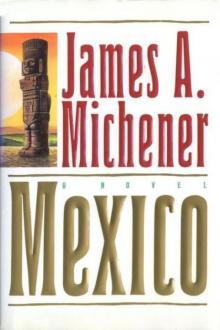 Mexico
Mexico The World Is My Home: A Memoir
The World Is My Home: A Memoir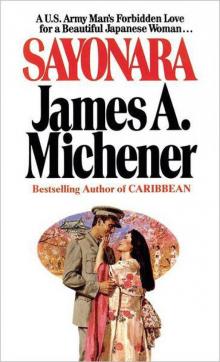 Sayonara
Sayonara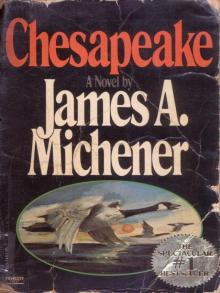 Chesapeake
Chesapeake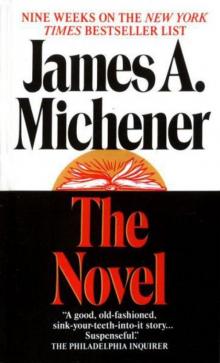 The Novel
The Novel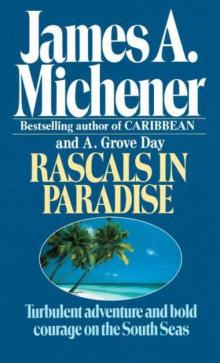 Rascals in Paradise
Rascals in Paradise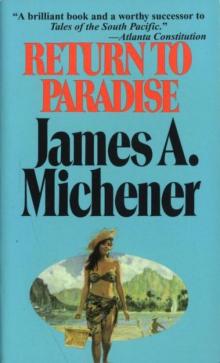 Return to Paradise
Return to Paradise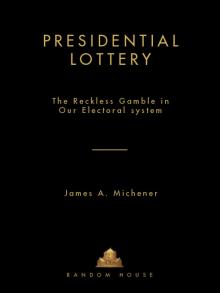 Presidential Lottery: The Reckless Gamble in Our Electoral System
Presidential Lottery: The Reckless Gamble in Our Electoral System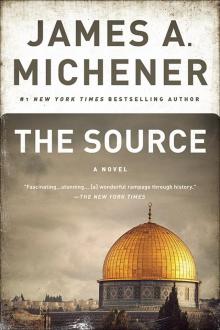 The Source
The Source Poland
Poland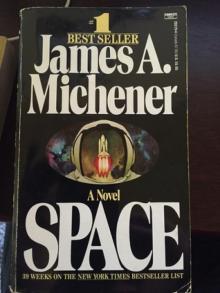 Space
Space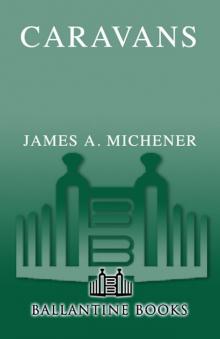 Caravans
Caravans Creatures of the Kingdom: Stories of Animals and Nature
Creatures of the Kingdom: Stories of Animals and Nature Iberia
Iberia Hawaii
Hawaii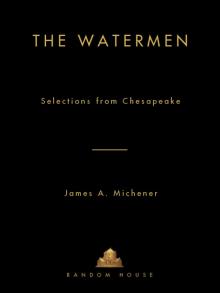 The Watermen: Selections From Chesapeake
The Watermen: Selections From Chesapeake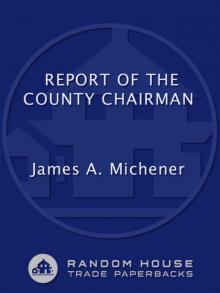 Report of the County Chairman
Report of the County Chairman The Covenant
The Covenant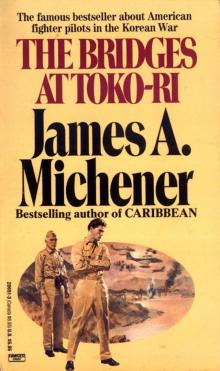 The Bridges at Toko-ri
The Bridges at Toko-ri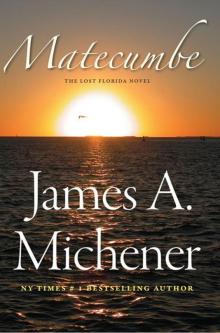 Matecumbe
Matecumbe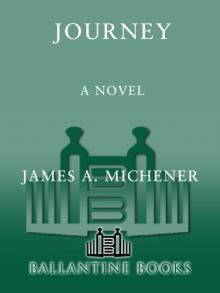 Journey: A Novel
Journey: A Novel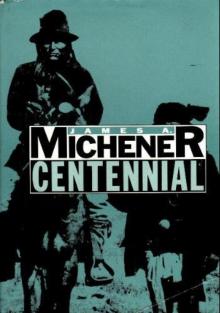 Centennial
Centennial Sports in America
Sports in America Texas
Texas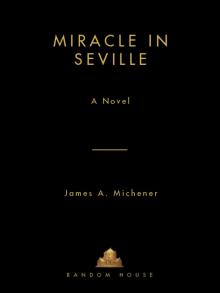 Miracle in Seville
Miracle in Seville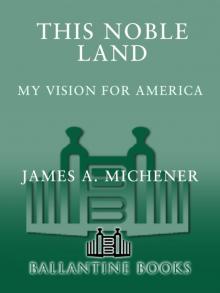 This Noble Land: My Vision for America
This Noble Land: My Vision for America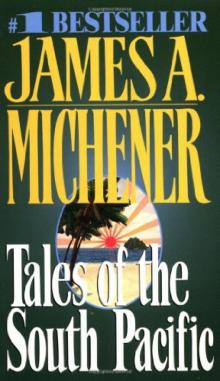 Tales of the South Pacific
Tales of the South Pacific Bridges at Toko-Ri
Bridges at Toko-Ri Space: A Novel
Space: A Novel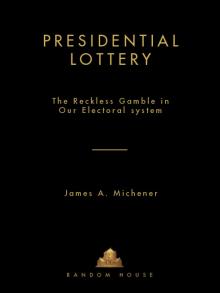 Presidential Lottery
Presidential Lottery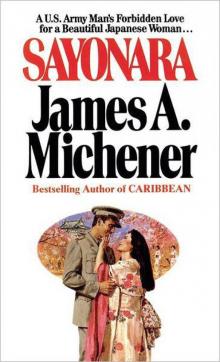 Sayonara: A Novel
Sayonara: A Novel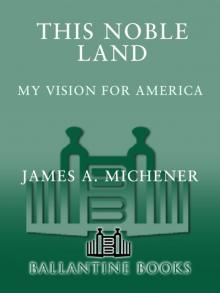 This Noble Land
This Noble Land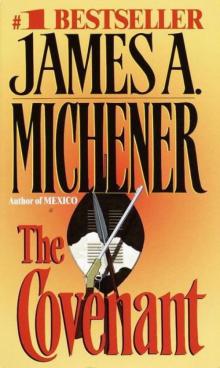 The Covenant: A Novel
The Covenant: A Novel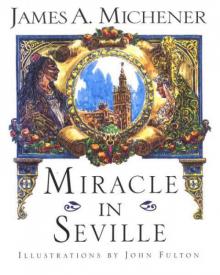 Miracle in Seville: A Novel
Miracle in Seville: A Novel The Bridge at Andau
The Bridge at Andau Source
Source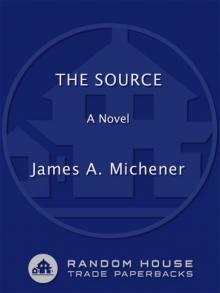 The Source: A Novel
The Source: A Novel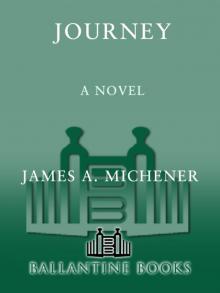 Journey
Journey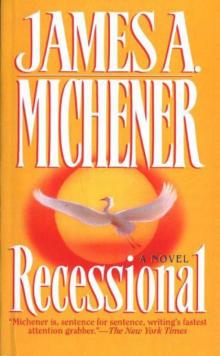 Recessional: A Novel
Recessional: A Novel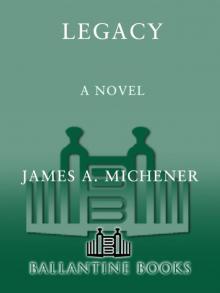 Legacy: A Novel
Legacy: A Novel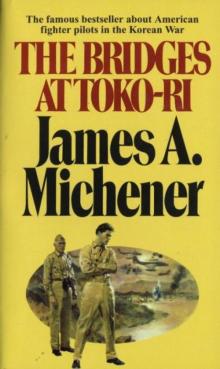 The Bridges at Toko-Ri: A Novel
The Bridges at Toko-Ri: A Novel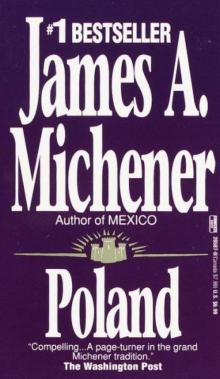 Poland: A Novel
Poland: A Novel